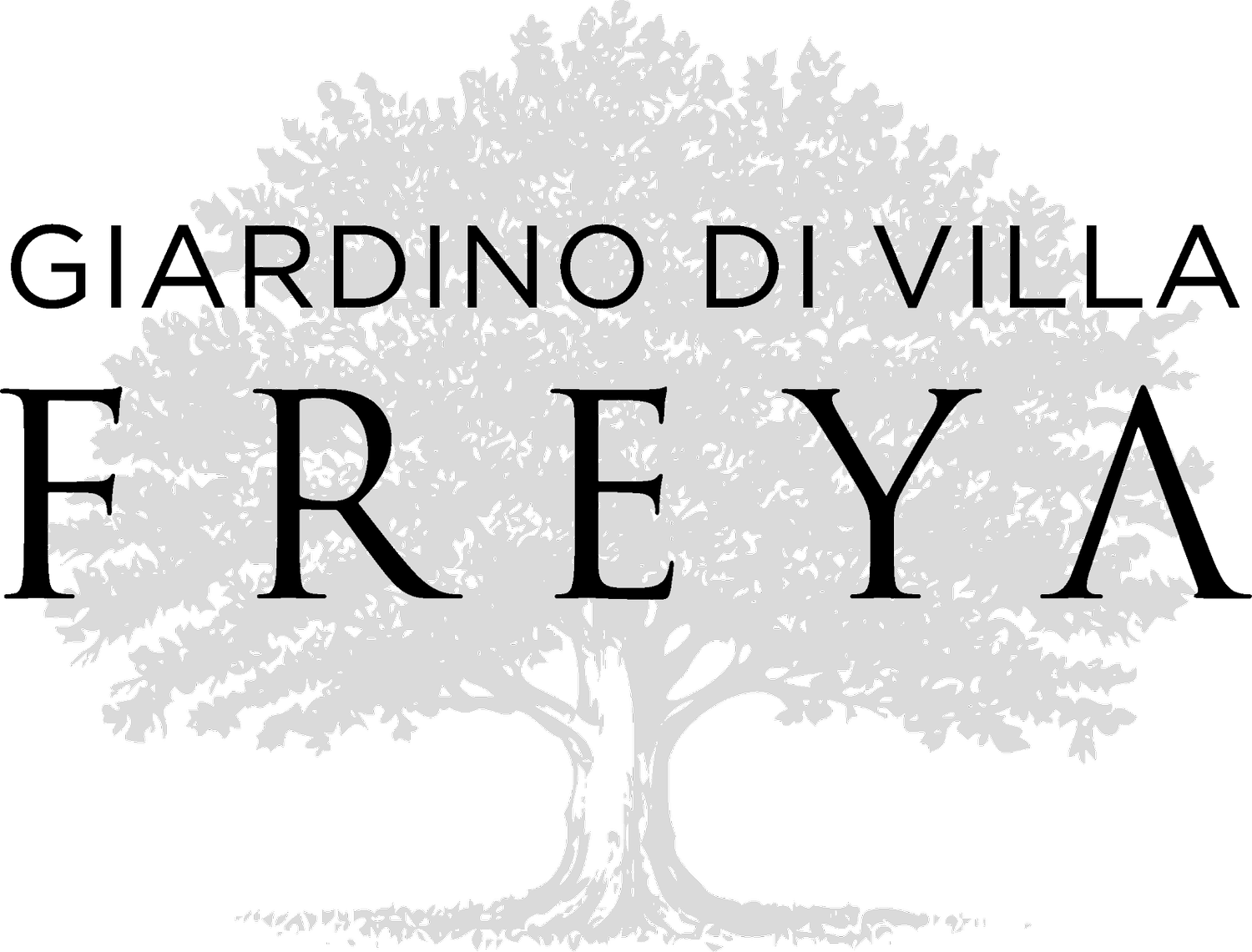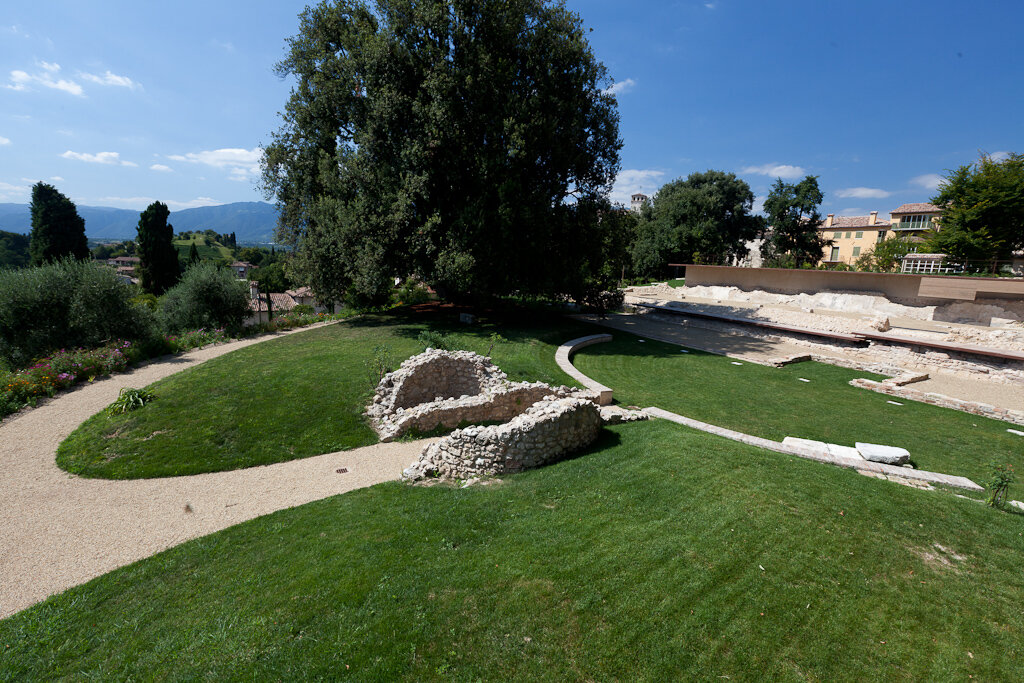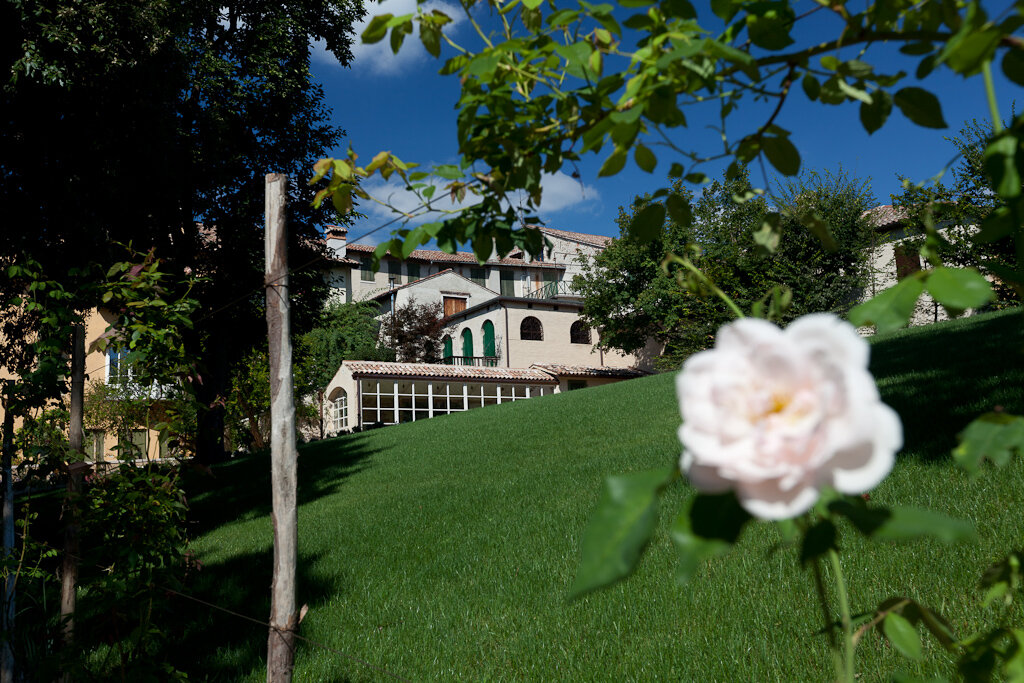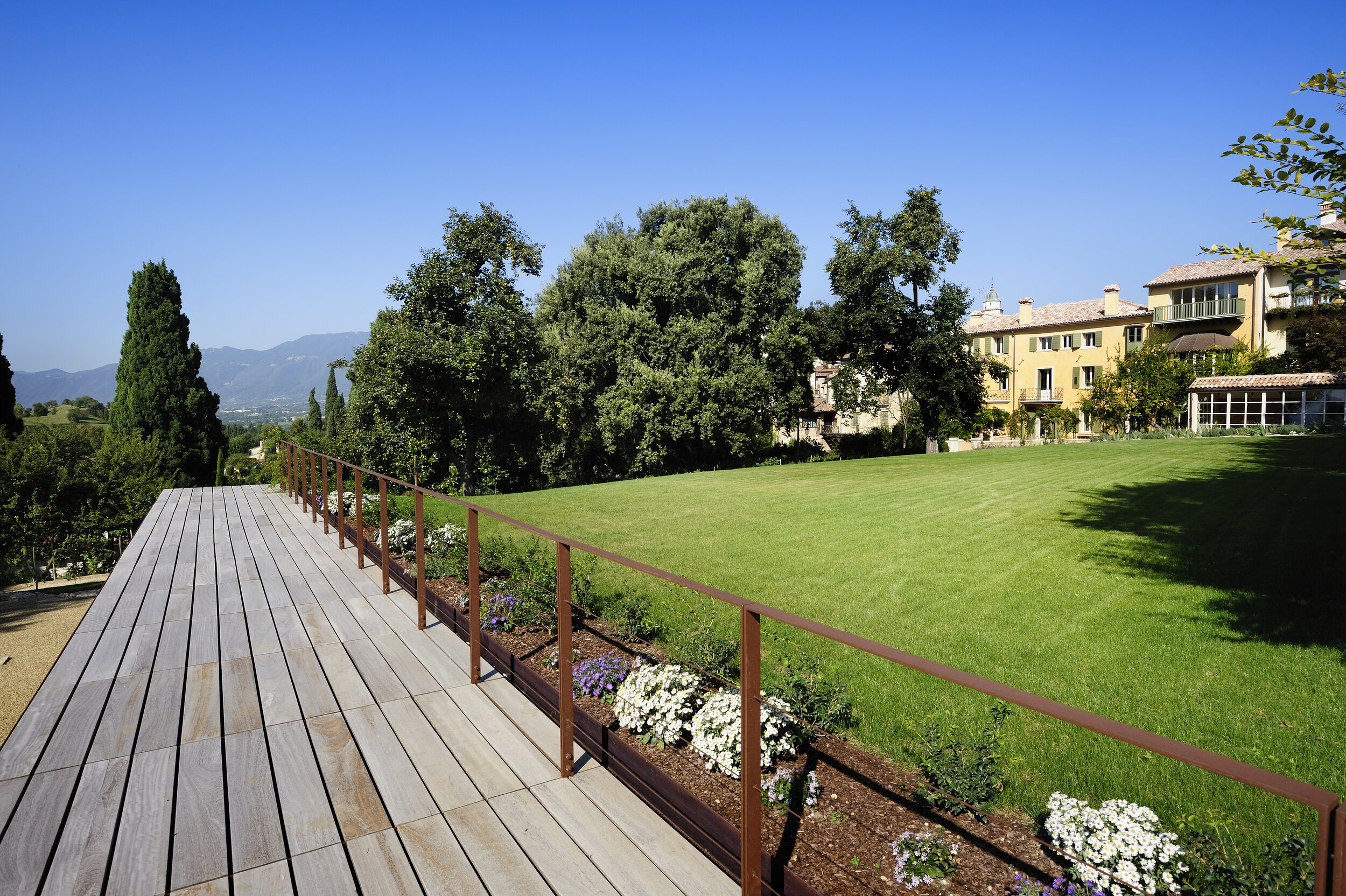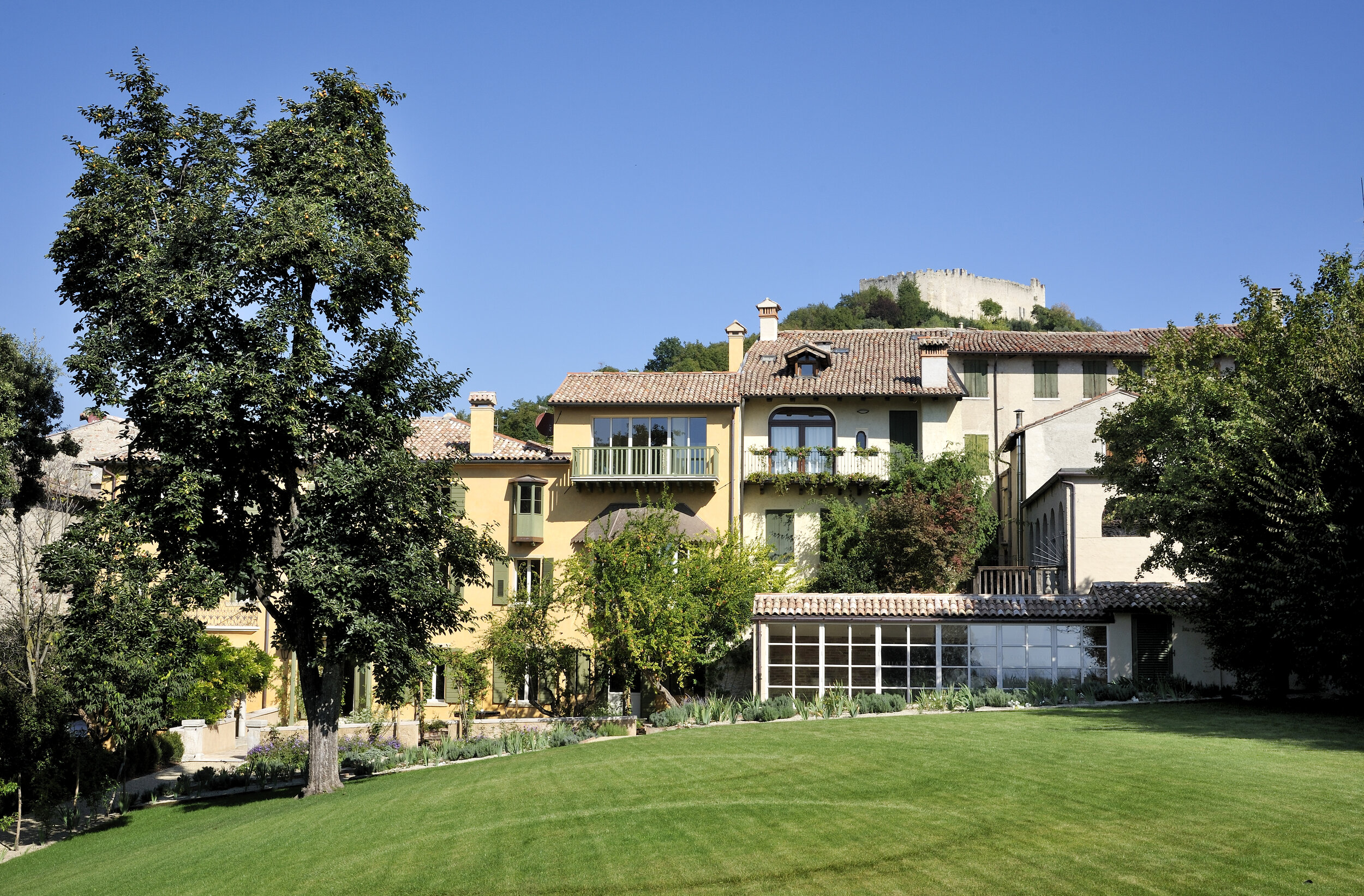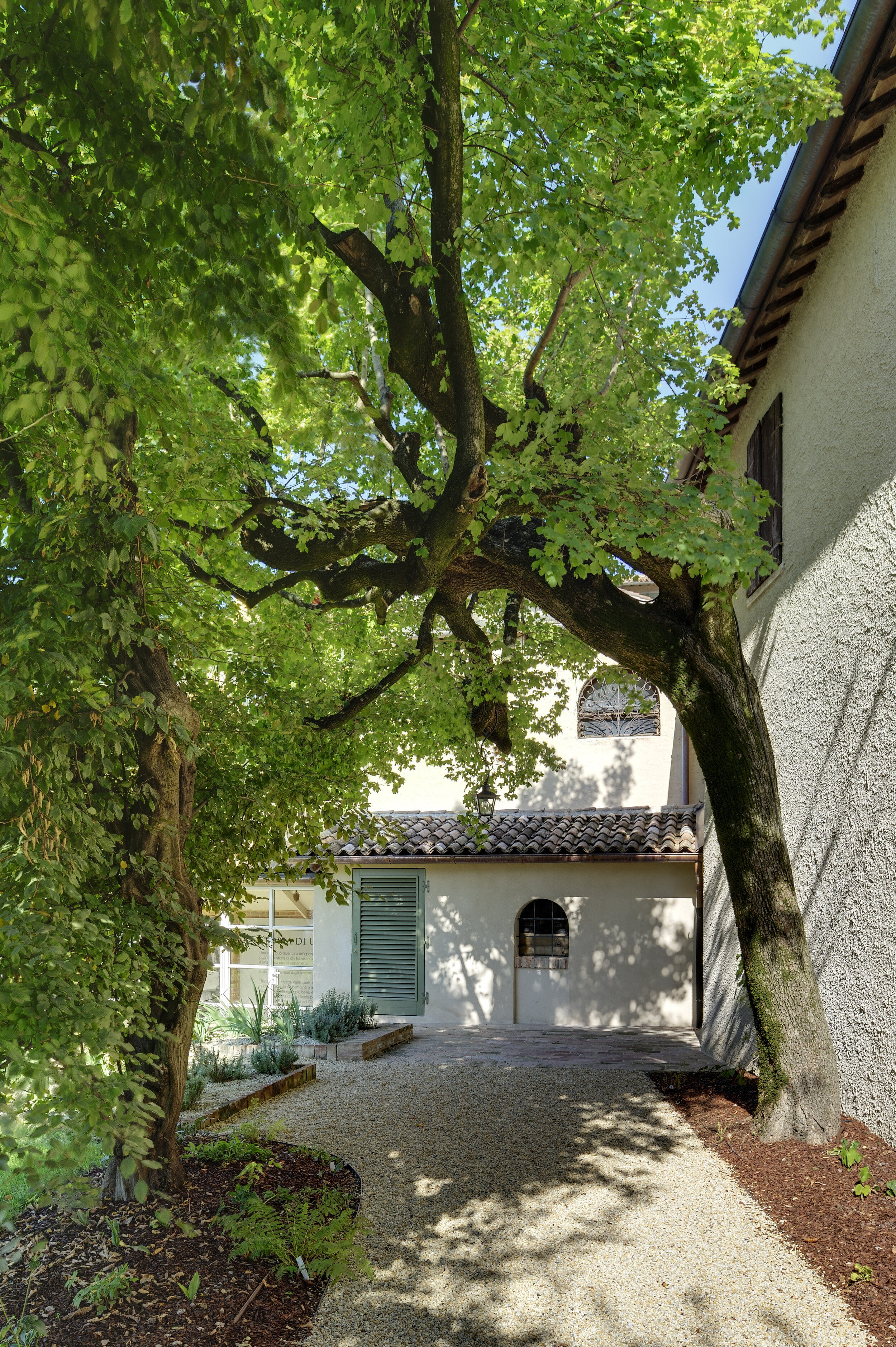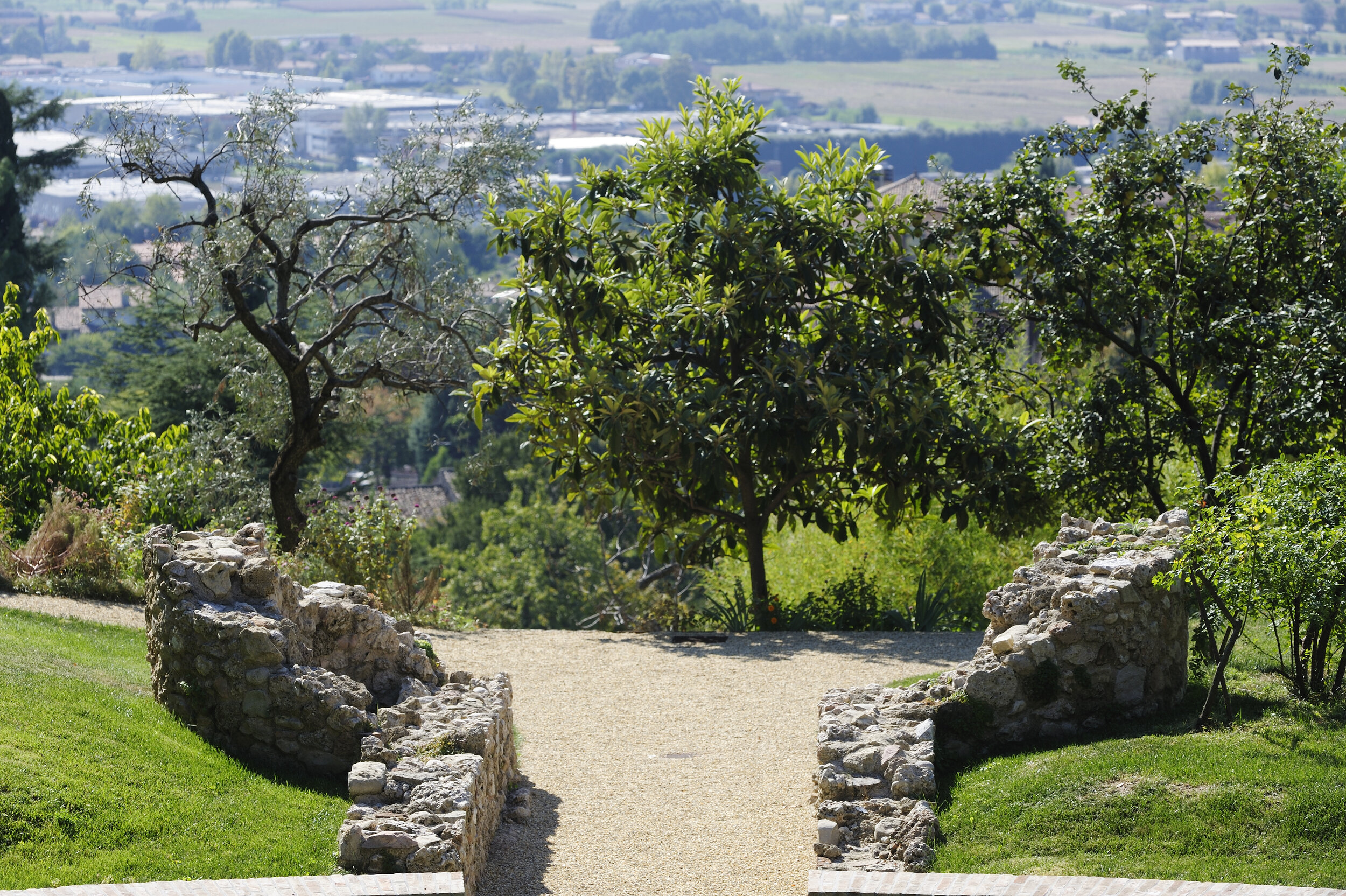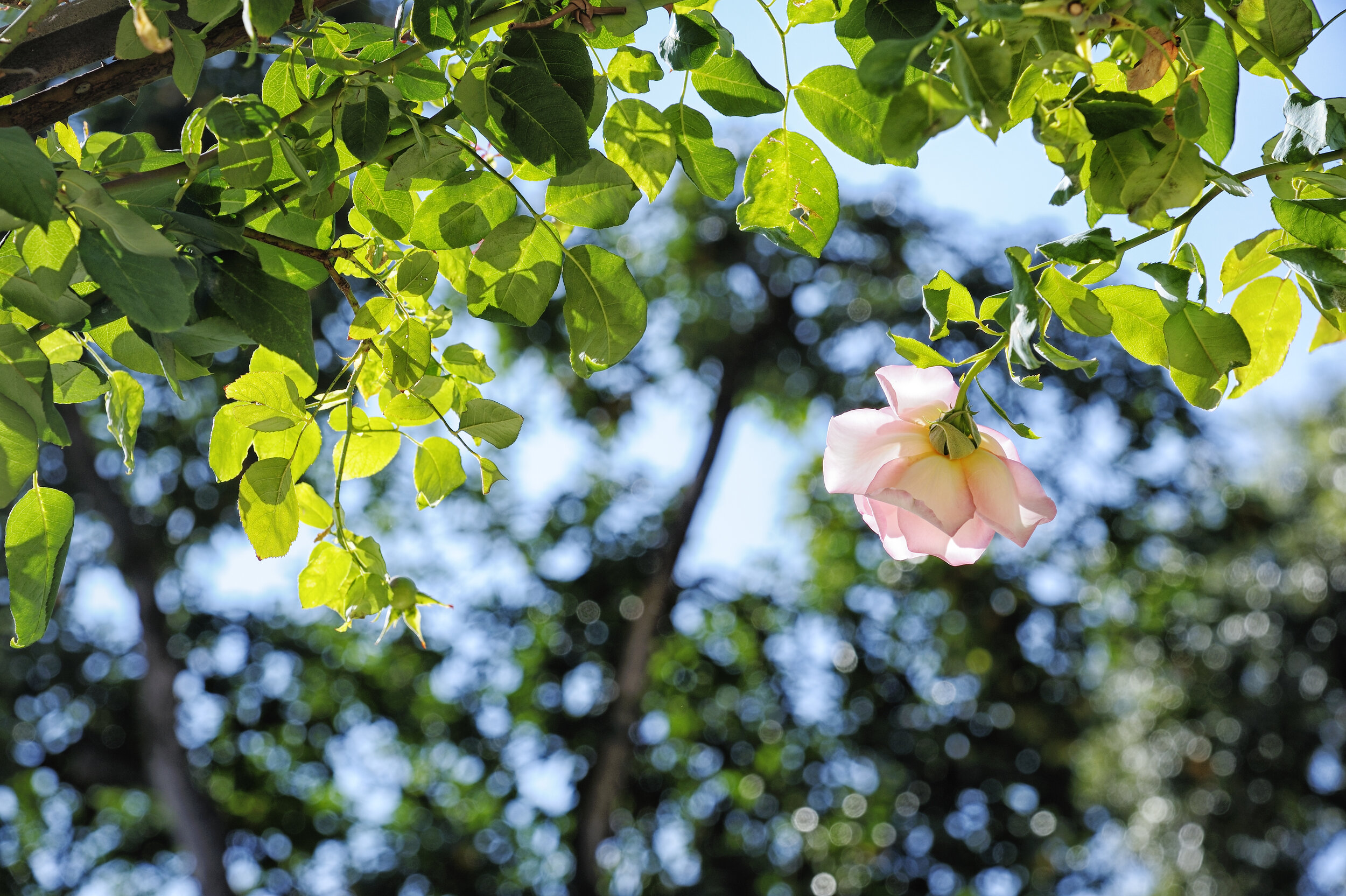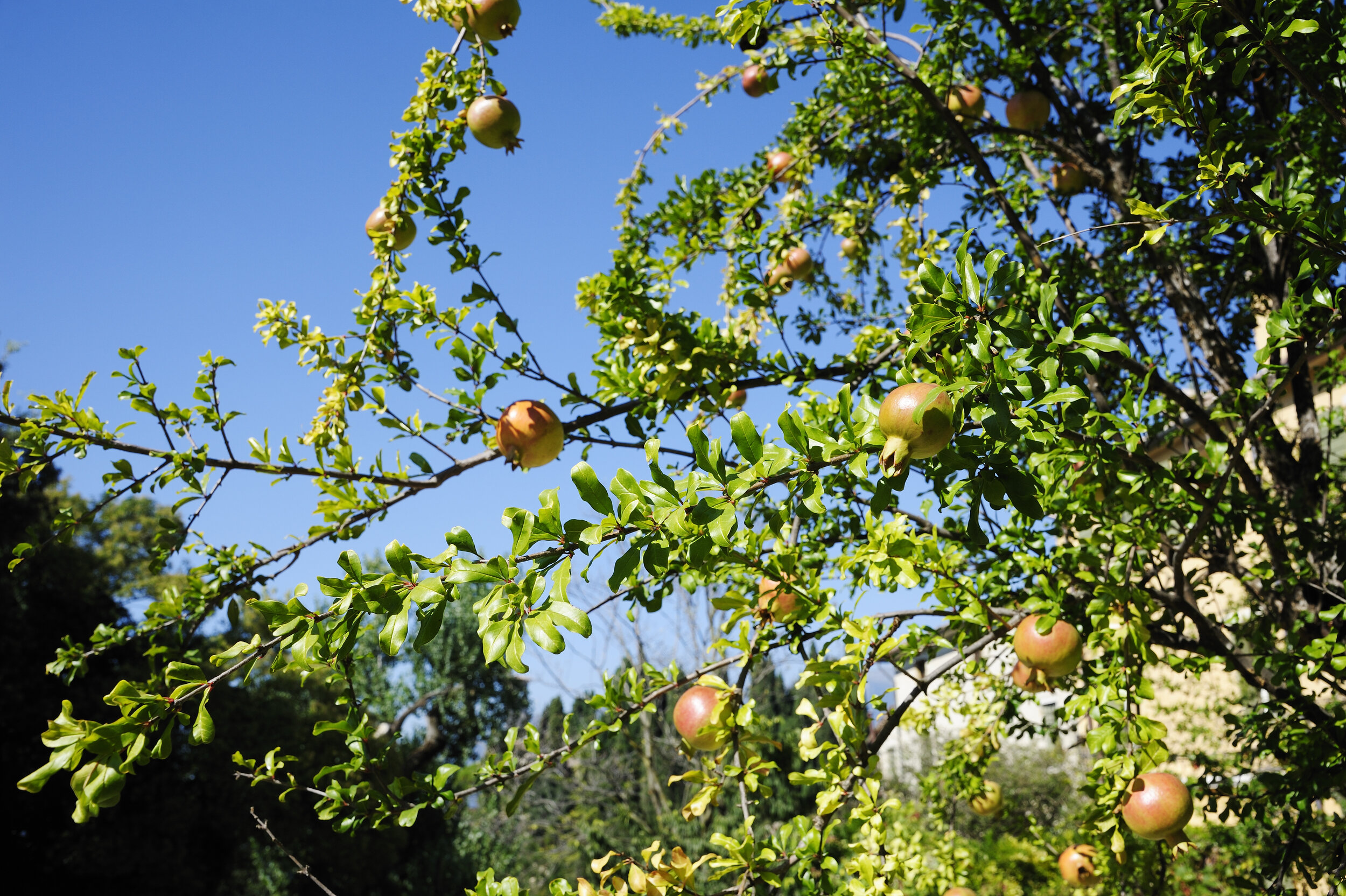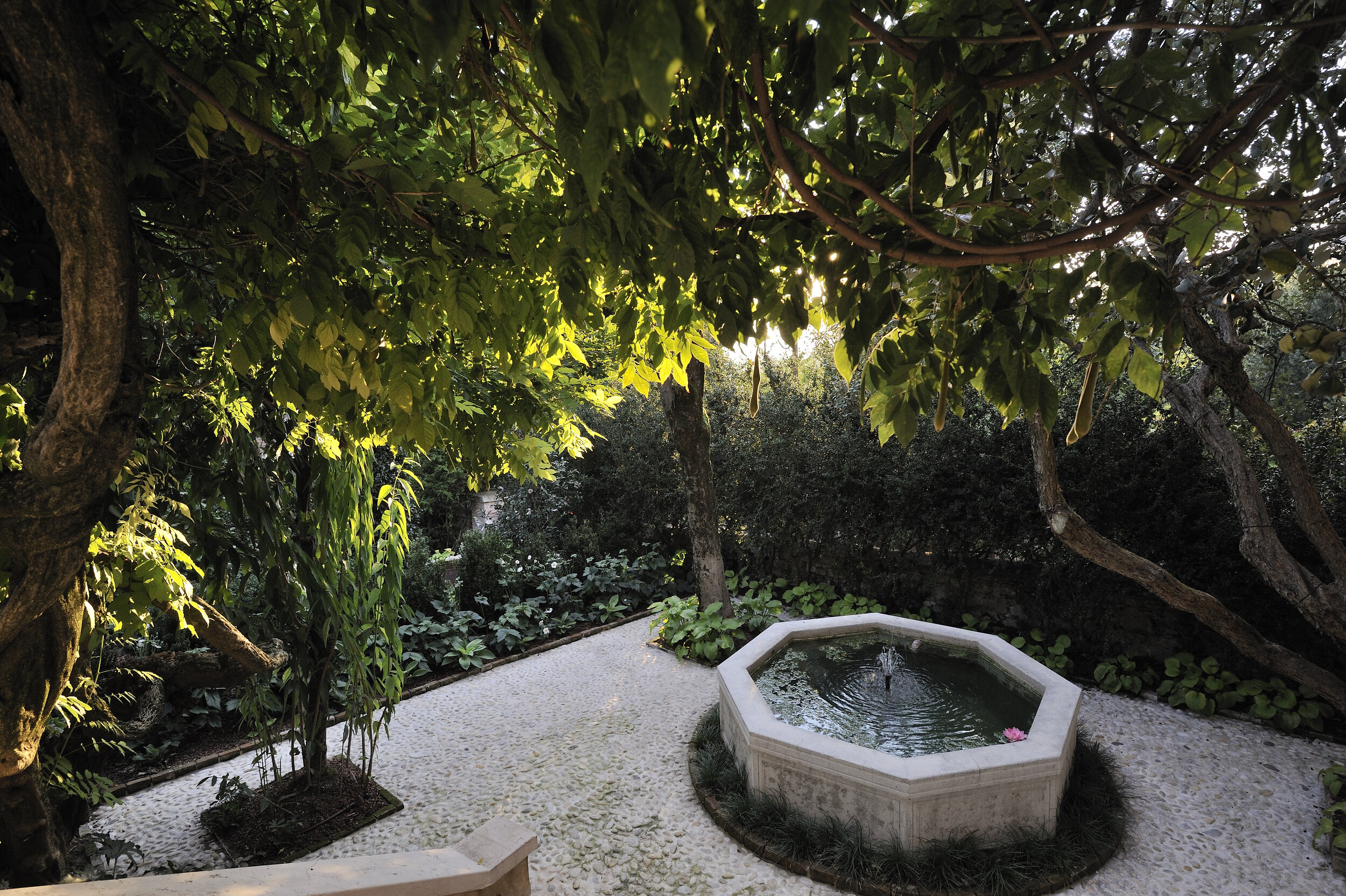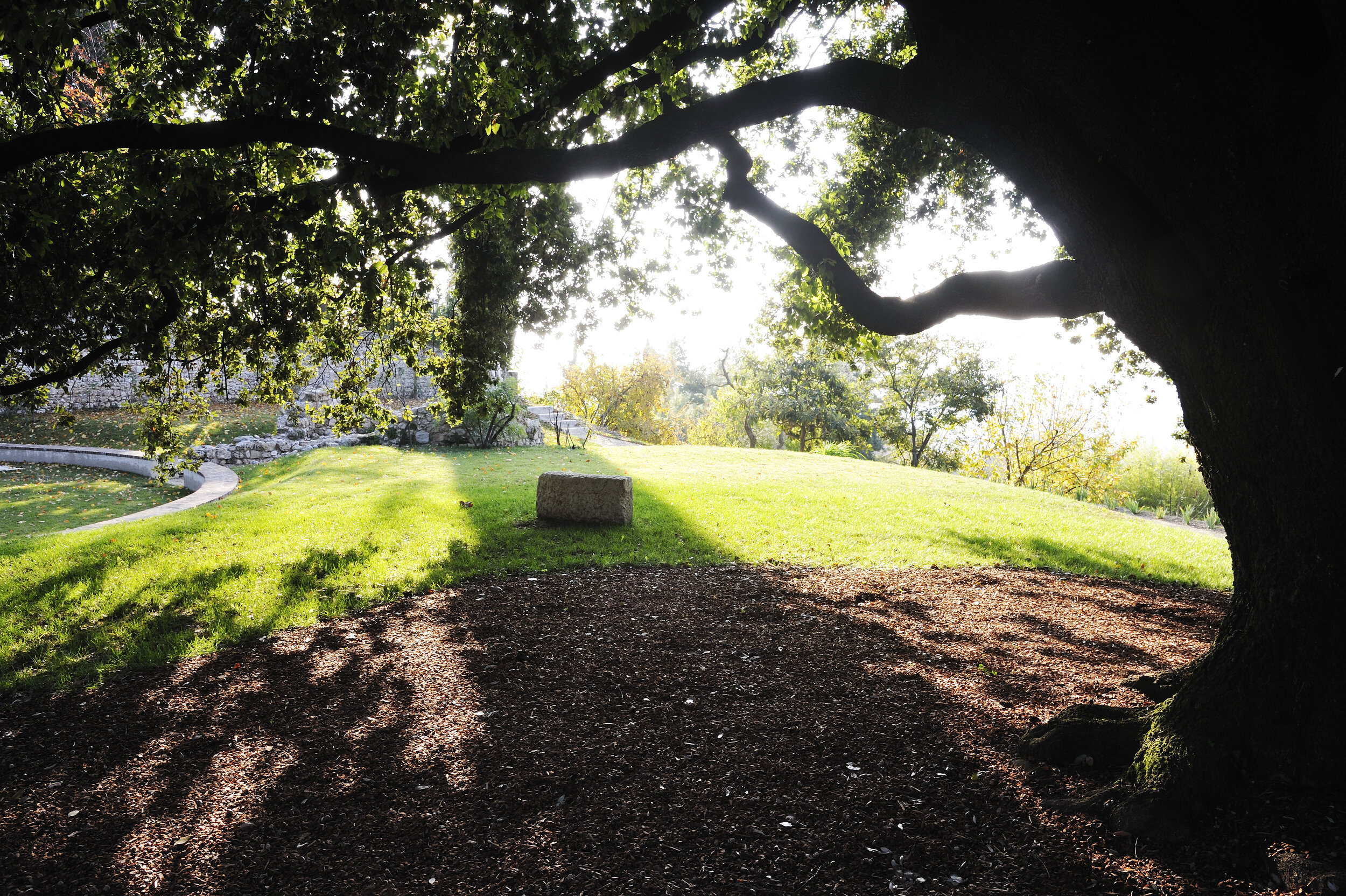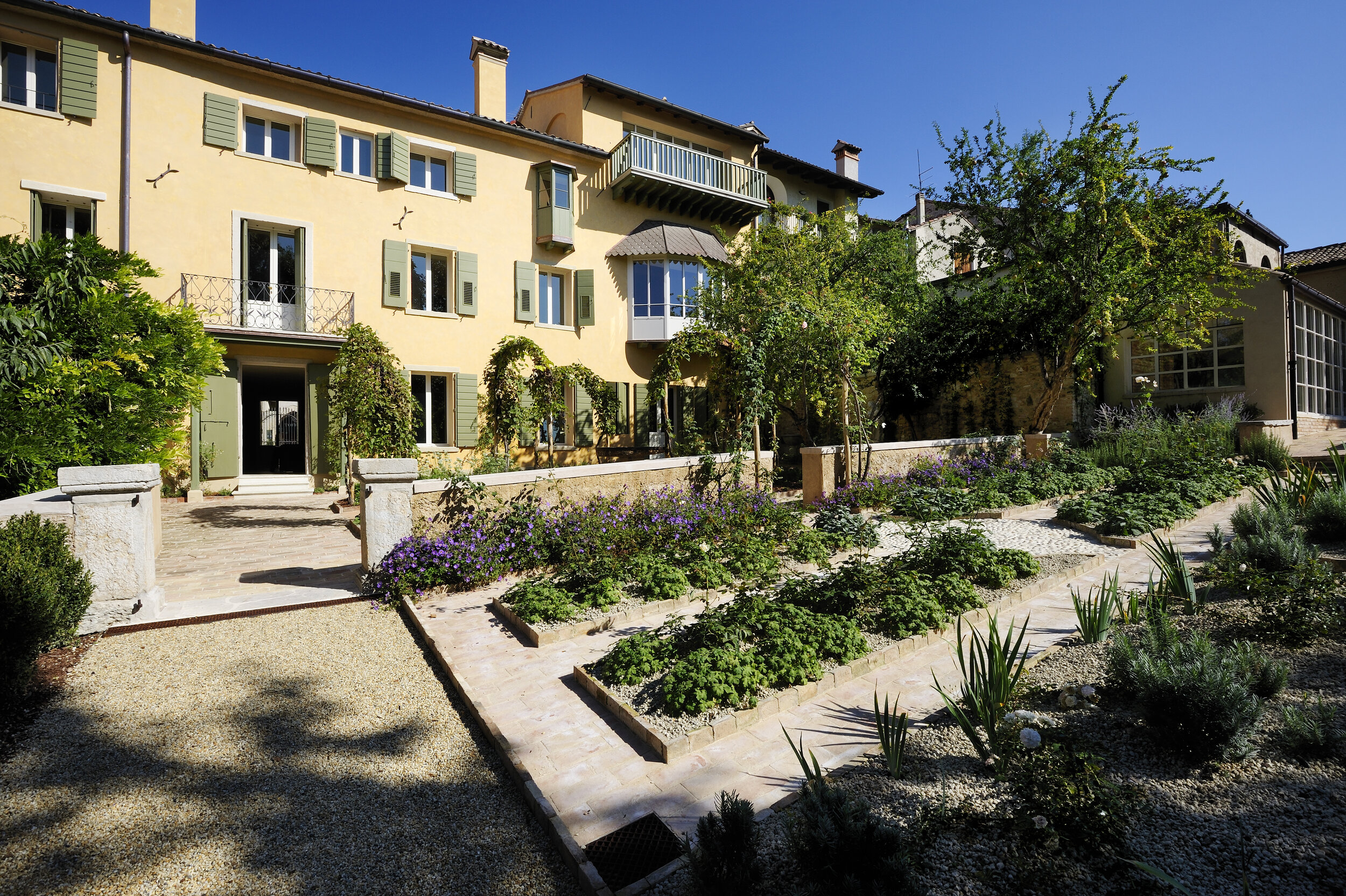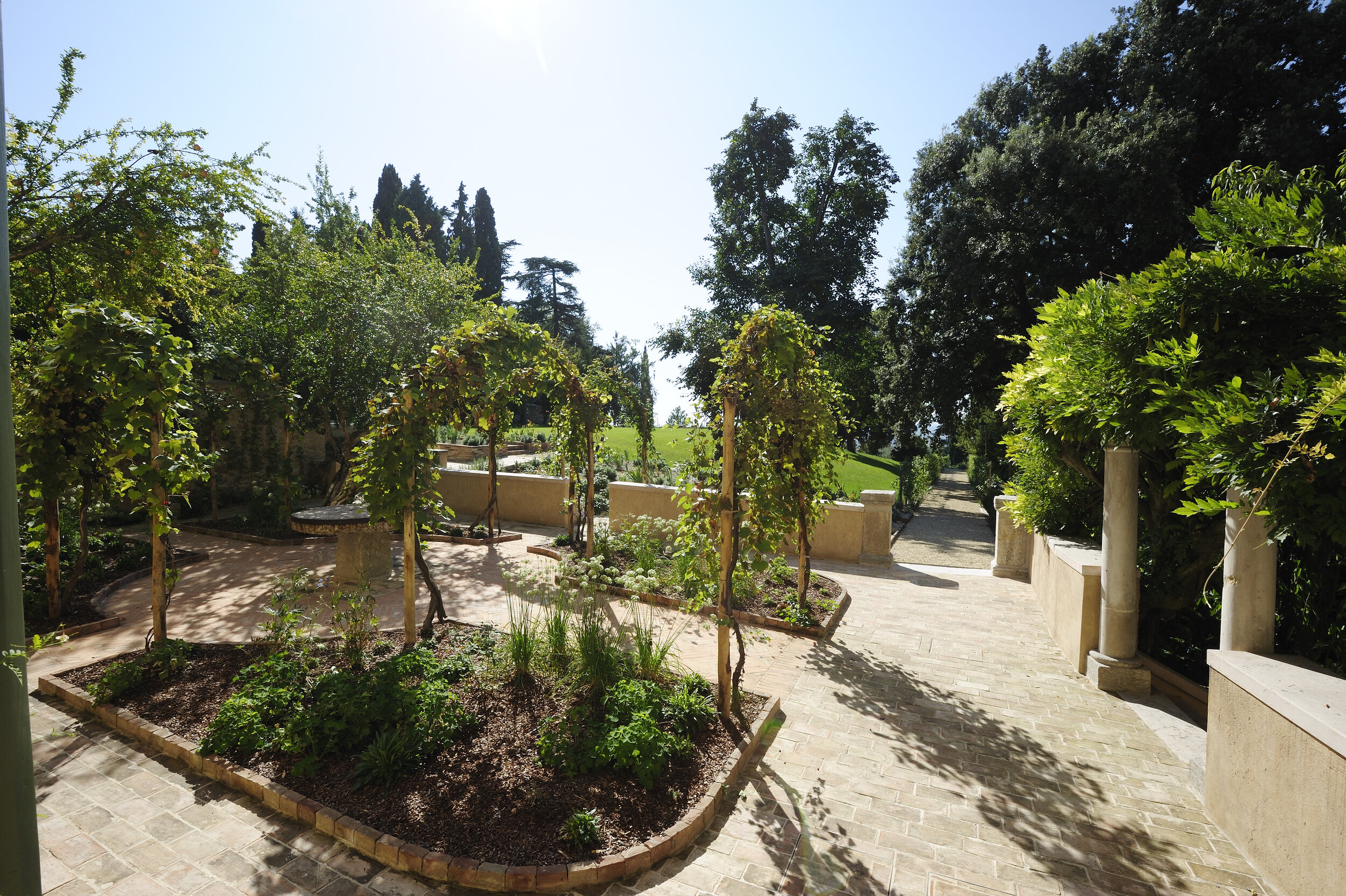THE GARDEN
THE GARDEN OF WONDERS
Covering some 5,000 square metres, Villa Freya's garden is the perfect refuge for body and soul. Today, you can visit the park as an experiential journey that appeals to all the senses. One discovers it little by little, although at a glance one immediately perceives its beauty, which is a perfect synthesis of shapes and colours, volumes and spaces. It is a timeless garden, divided into many rooms, each one with its own plant species, creating a symbiosis of wild and cultivated species, ancient ruins and natural elements.
The garden, which belonged to Freya Stark and before that to Herbert Young, is a true romantic garden, but its charm does not like rigid connotations because it changes according to the sensations it creates and depending on the transformations of nature. It is possible to admire the ancient ruins while passing through the flower beds, following the avenue of roses and irises that lead to the hundred-year-old holm oaks and the ruins of the Roman theatre. There are many secrets in the garden, that is the place where the traveller Freya Stark and the Queen Mother of England met. This encounter is immortalised around the millstone between the rows of vines and the aromatic flower beds.
Imagining an ideal route that follows a north-south orientation, while walking through the garden you encounter nine rooms that can be considered authentic themed areas:
Visitors’ entrance
The octagonal fountain: “East meets West”
The courtyard of the old millstone surrounded by natural herbs
The English flowerbeds: roses, irises, perennials, columbines and buttercups
The avenue of white hornbeams
The lawn and its large khaki trees
The panoramic view of the archaeological site
The shade created by the centuries-old holm oaks
The archaeological site of the Roman theatre (1st century A.D.)
The belvedere
The terraces of the sustainable organic vegetable garden
The romantic path of ancient roses and irises
Exit
THE ORGANIC VEGETABLE GARDEN
The terraced vegetable garden is part of a new project that is in line with an organic and natural maintenance of the garden of Villa Freya and it follows some general objectives:
Enhancing the landscape as cultural, ecological and social heritage;
Preserving the biodiversity of the natural heritage;
Promoting an ecological and biological culture;
Experimenting an integration between educational proposals and tourist offer in order to create an experiential tourism.
Continuous observation and fieldwork have led to the specific objective of this project: improving the use of the terraces in the park while rediscovering a historical identity of the vegetable garden of Villa Freya.
A historical-archival analysis conducted by the Province of Treviso, which owns the park under an agreement, states.
In order to have documentary proof of the existence of the properties forming part of the body of the Villa it is necessary to go back to 1811. As a matter of fact, the maps of the Provisional Land Registry (so-called “Catasto Napoleonico”) drawn up in that year for the Municipality of Asolo, District of Bassano Department of the Tagliamento (Doc 11), identify on the parcels 1376 and 1377 (Doc 12), a "house and a vegetable garden” and both being the property of Basso Sacerdote Pietro di Antonio. In the past the area of the vegetable garden was used and thought of as a place for horticulture, not only because of the terracing, but also because there was a water collection tank for manual irrigation.
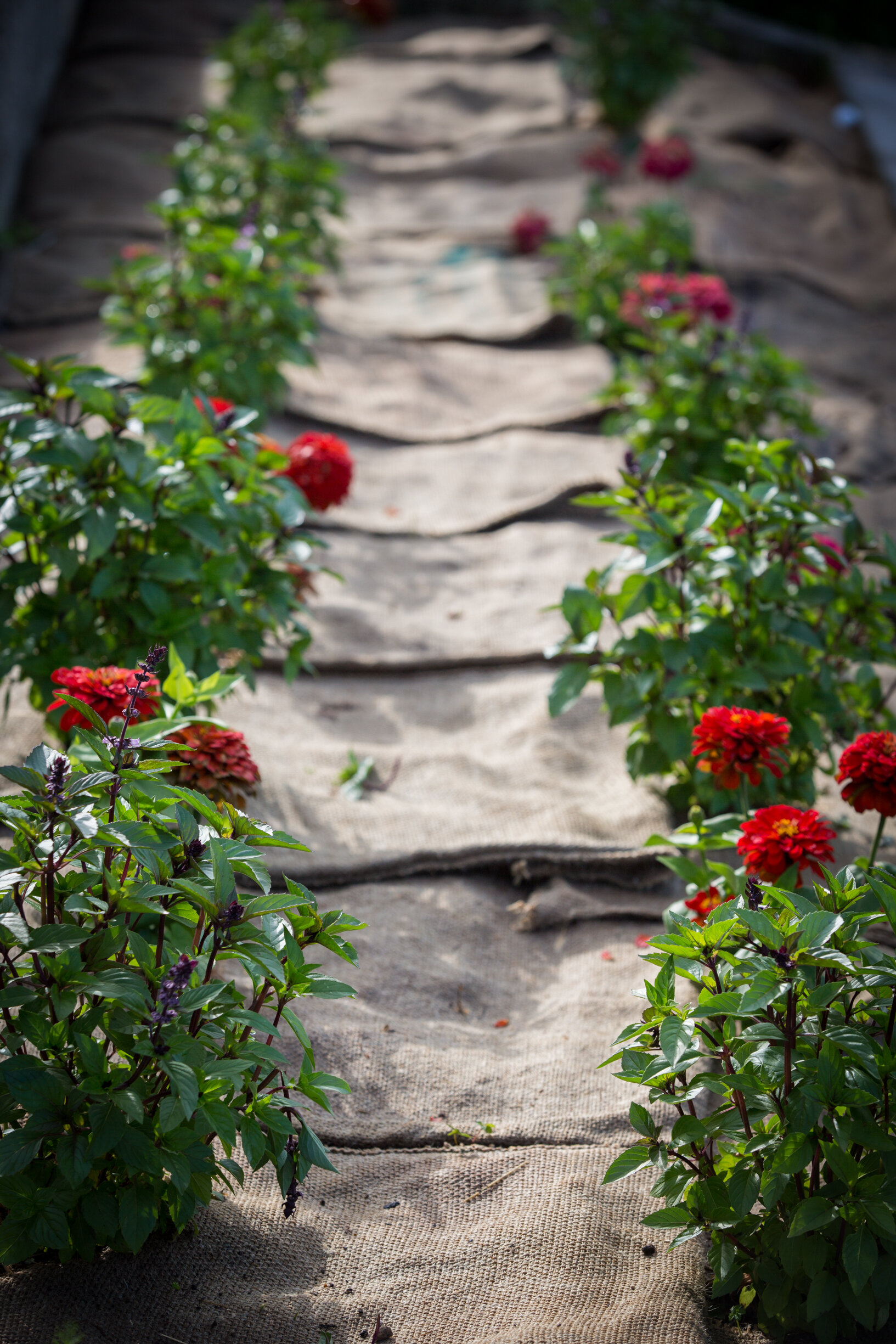
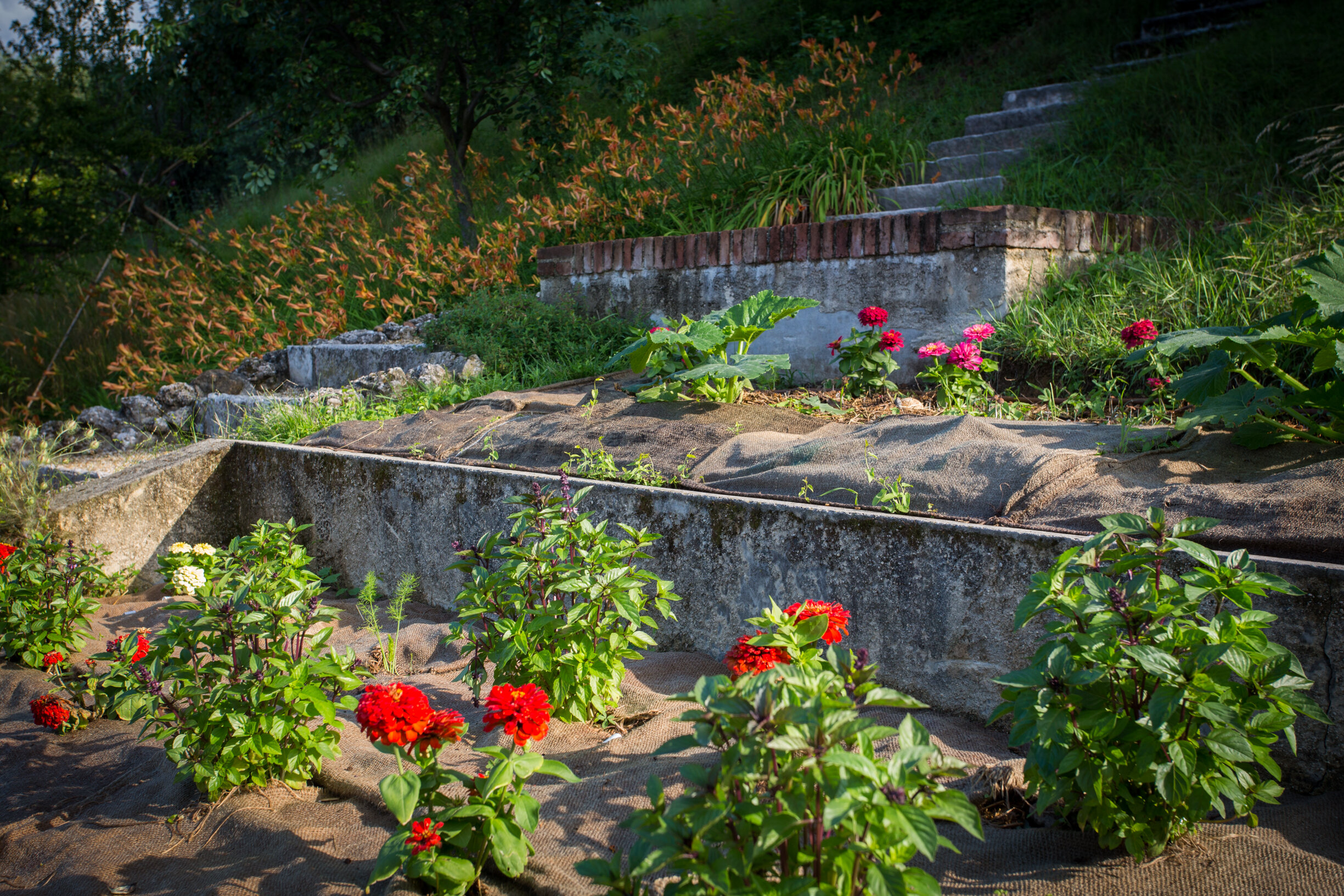
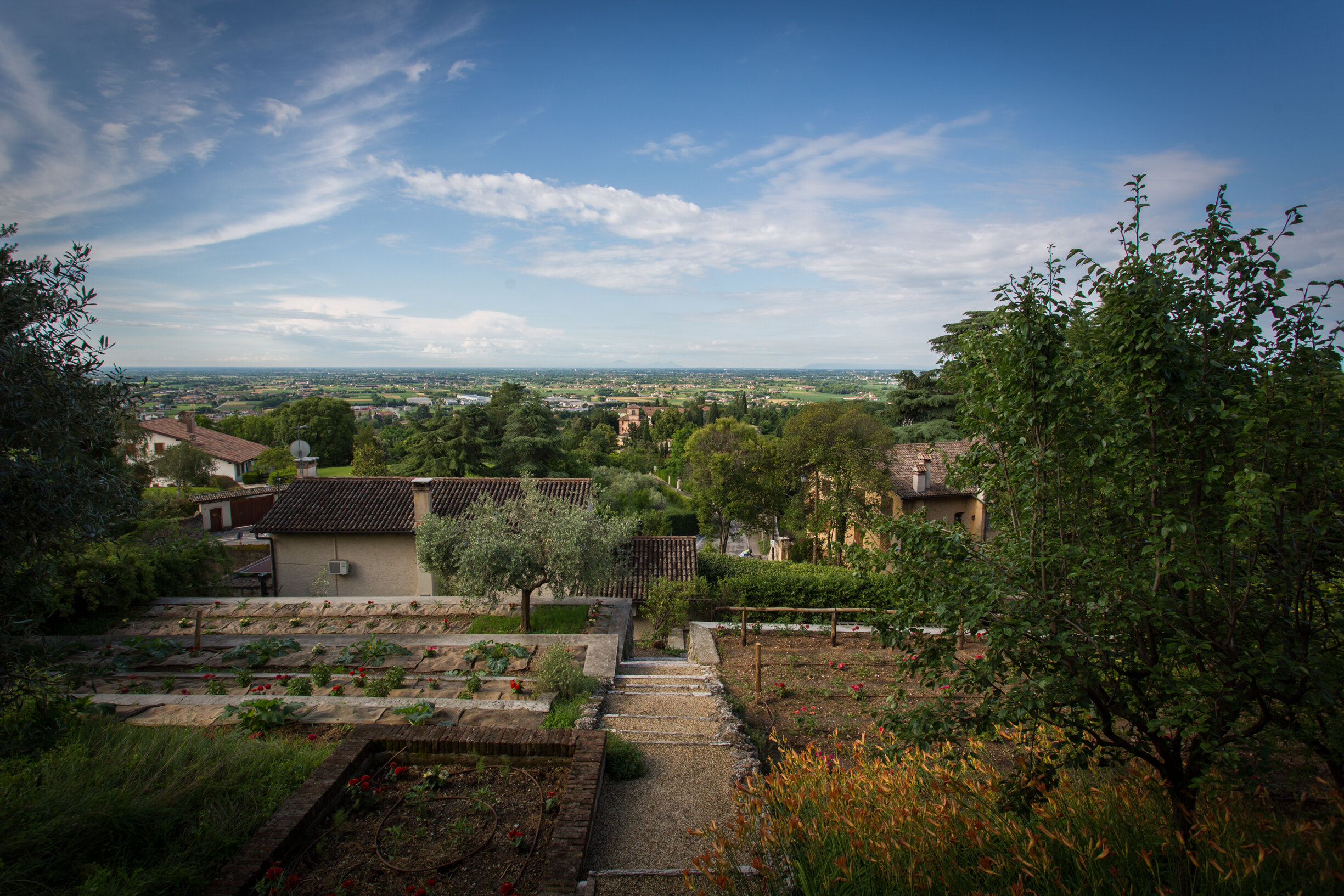
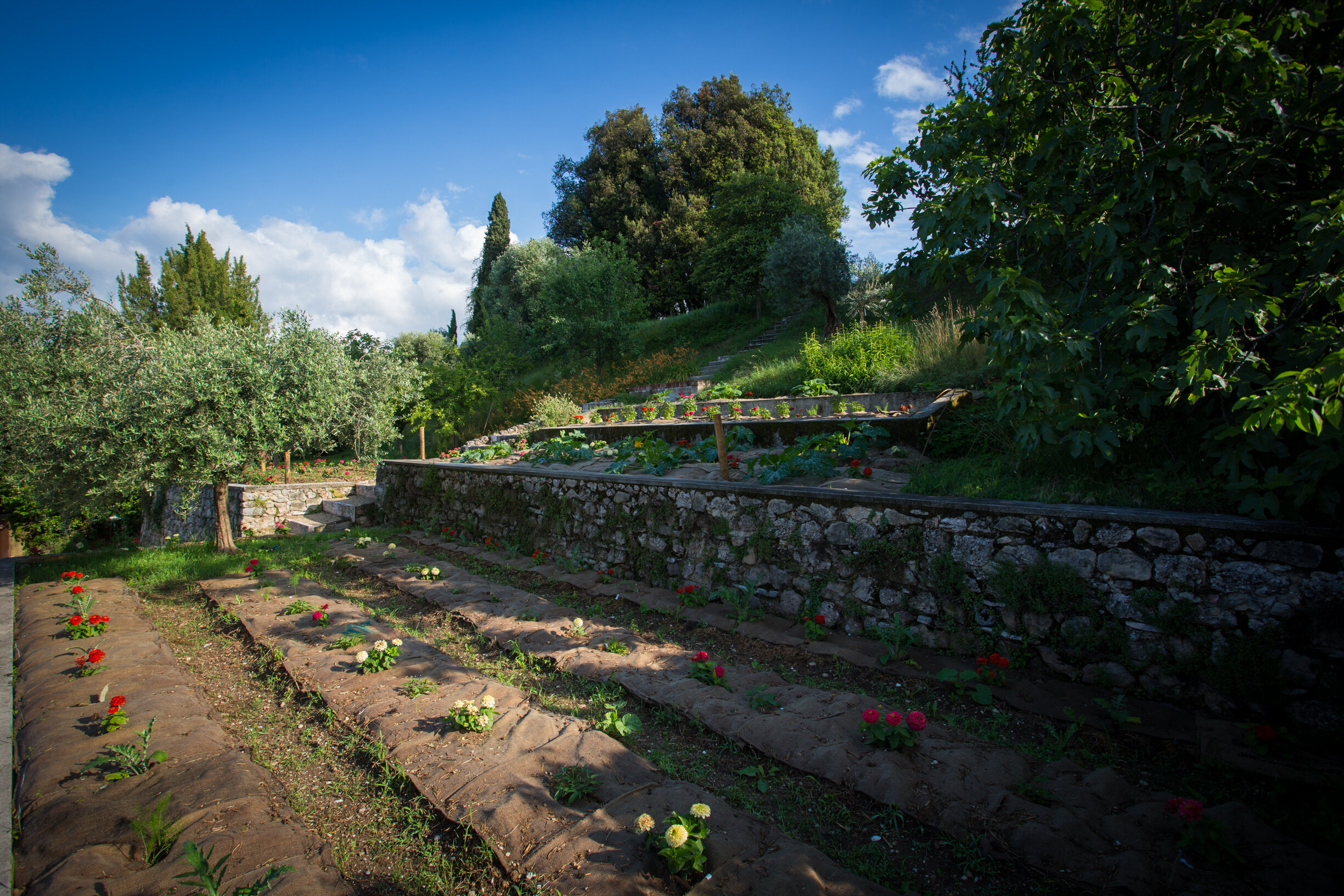
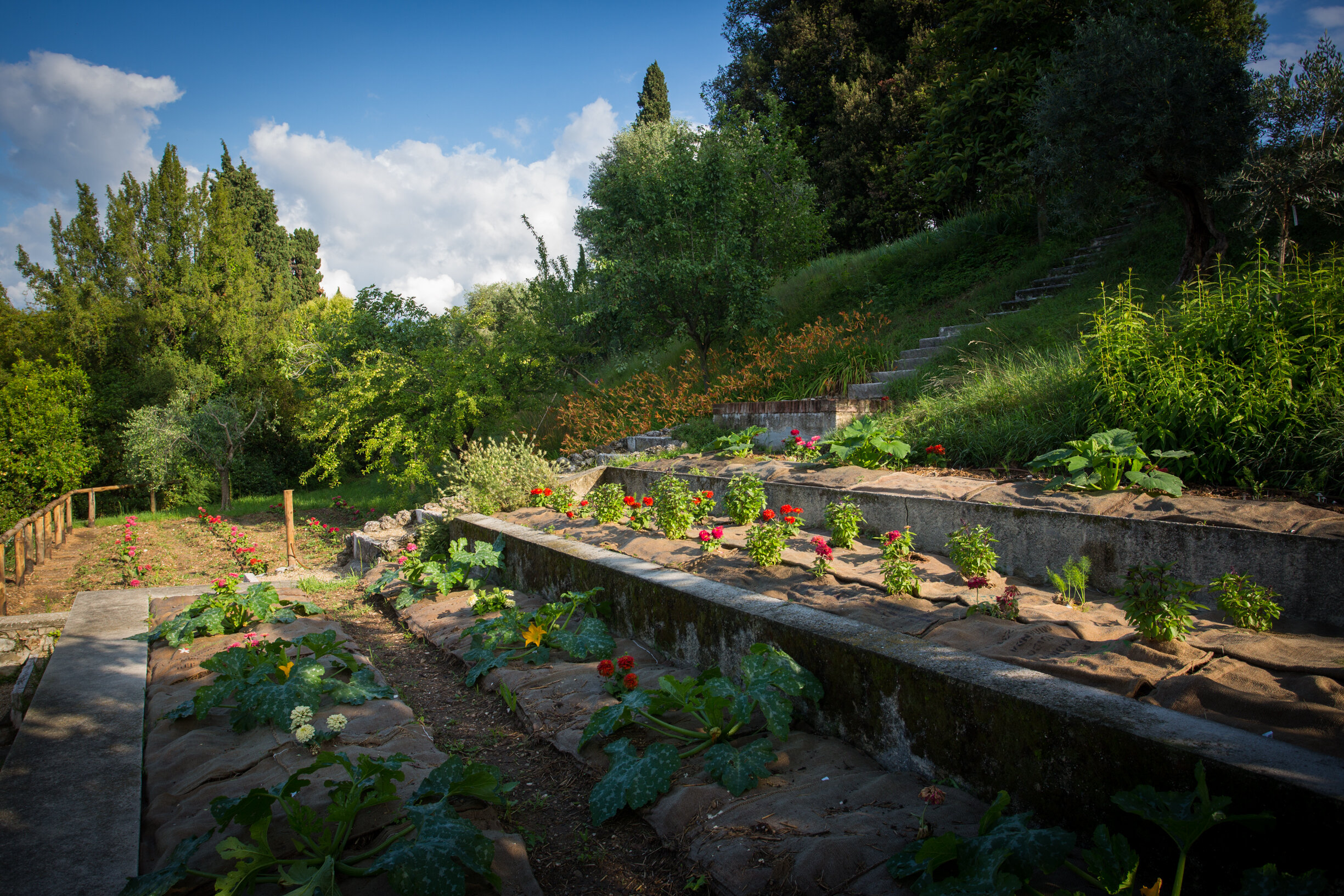

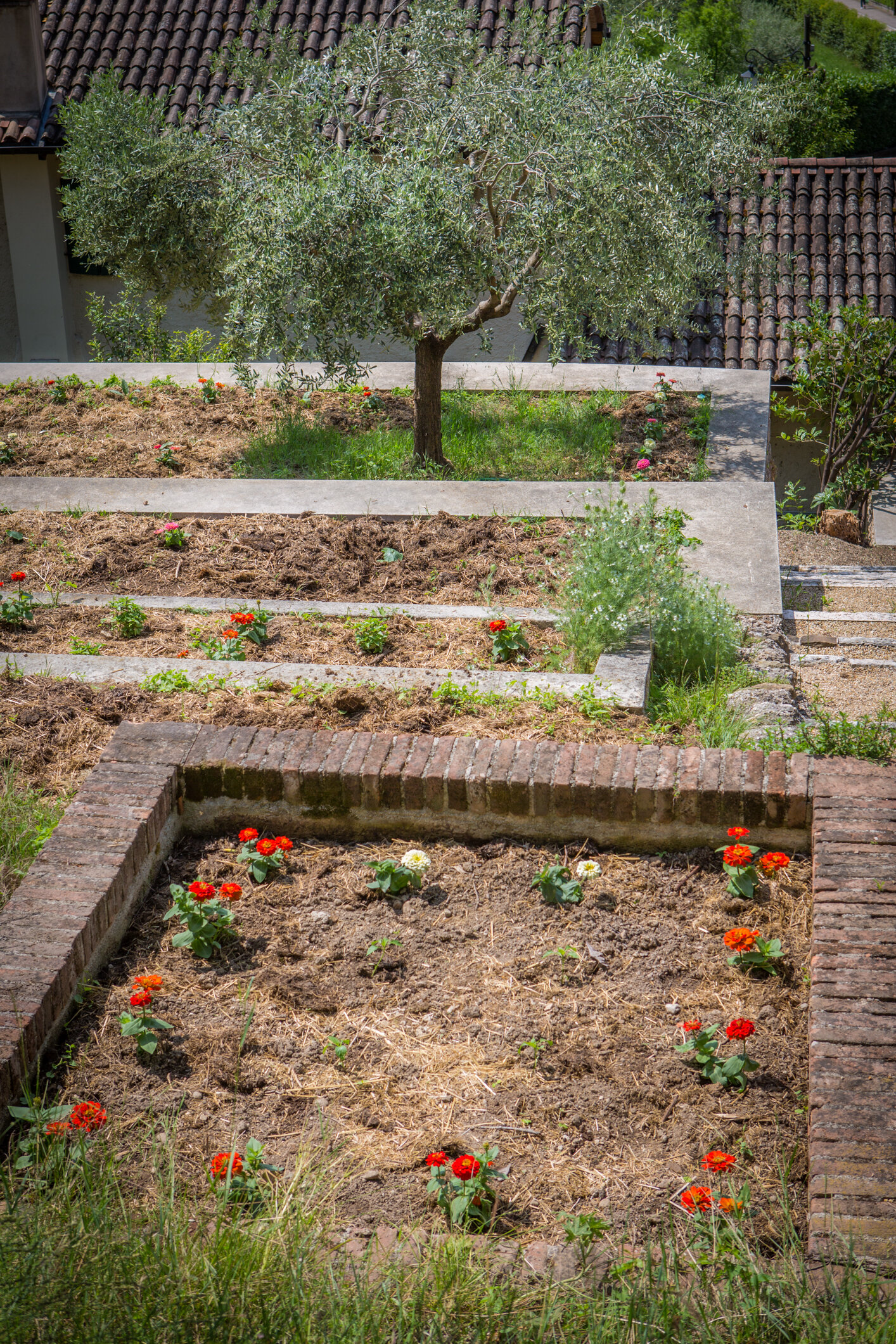
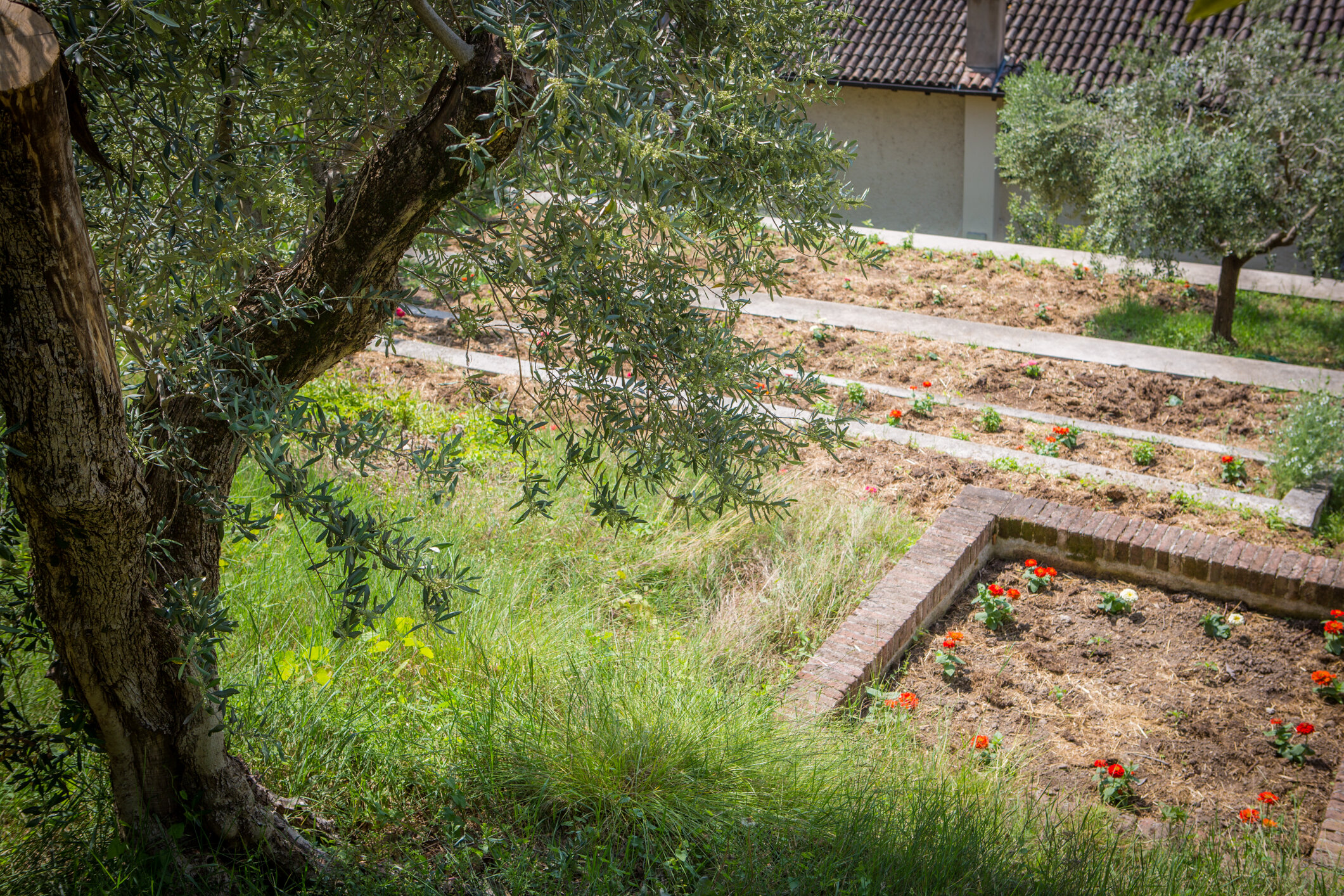

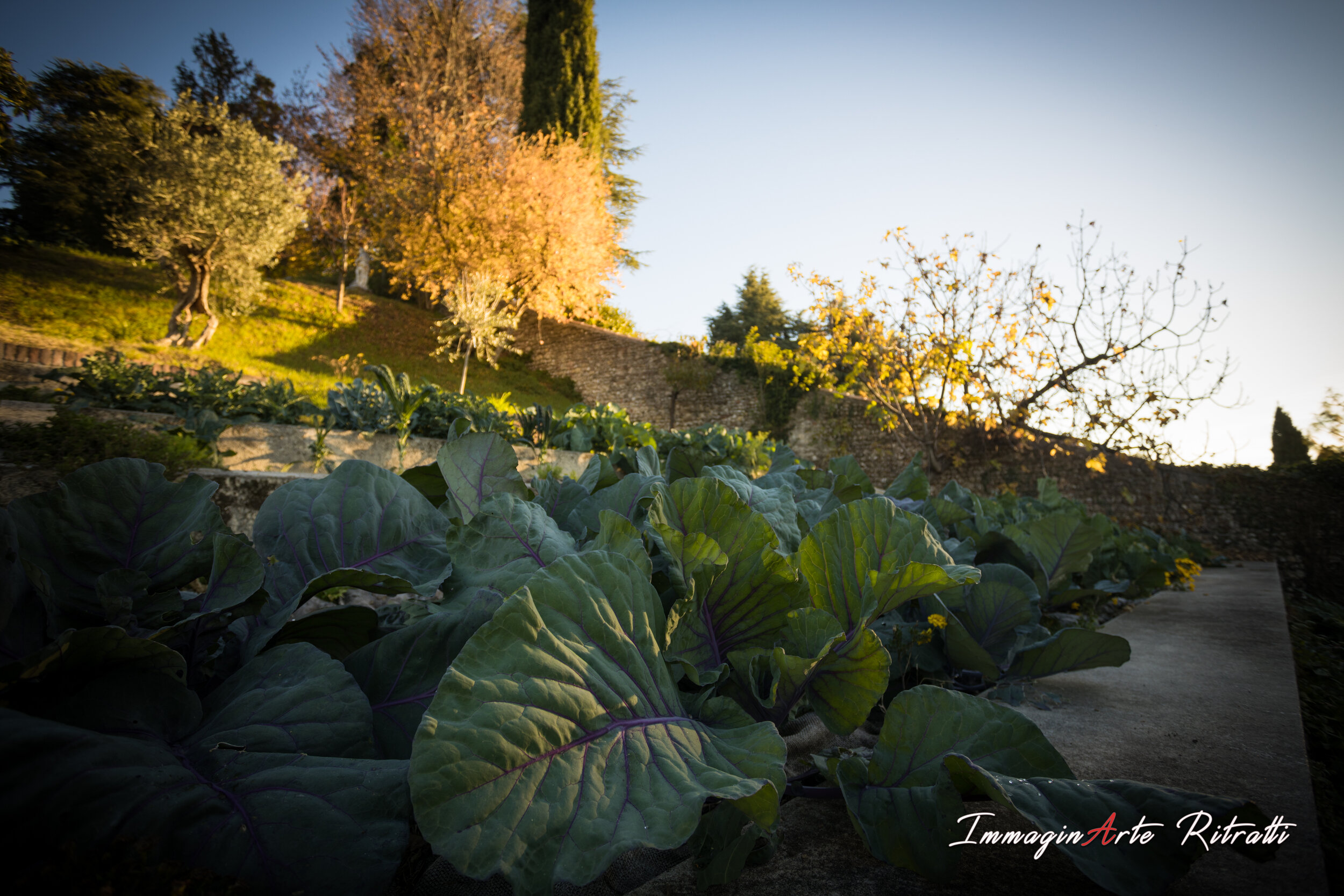
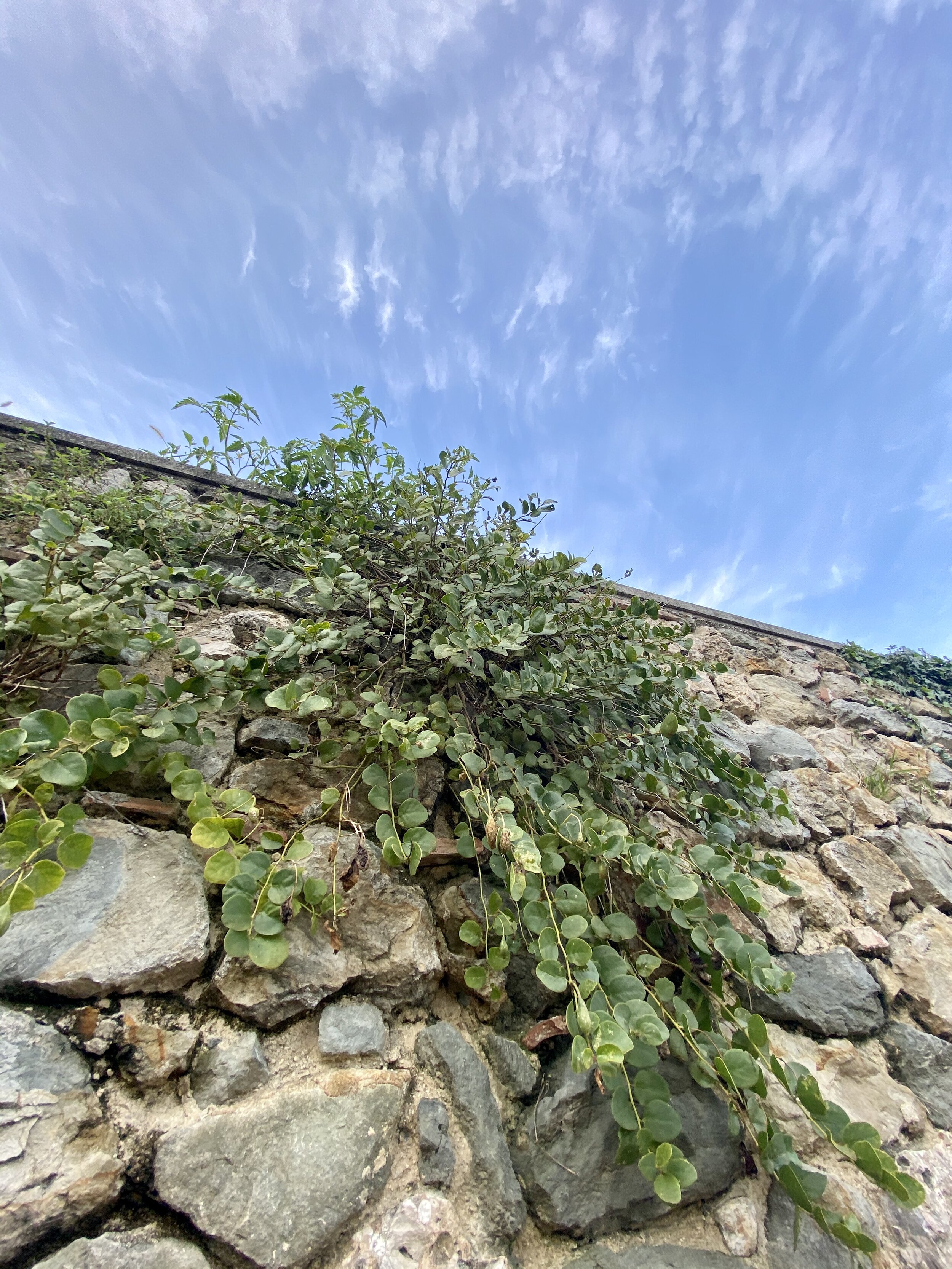
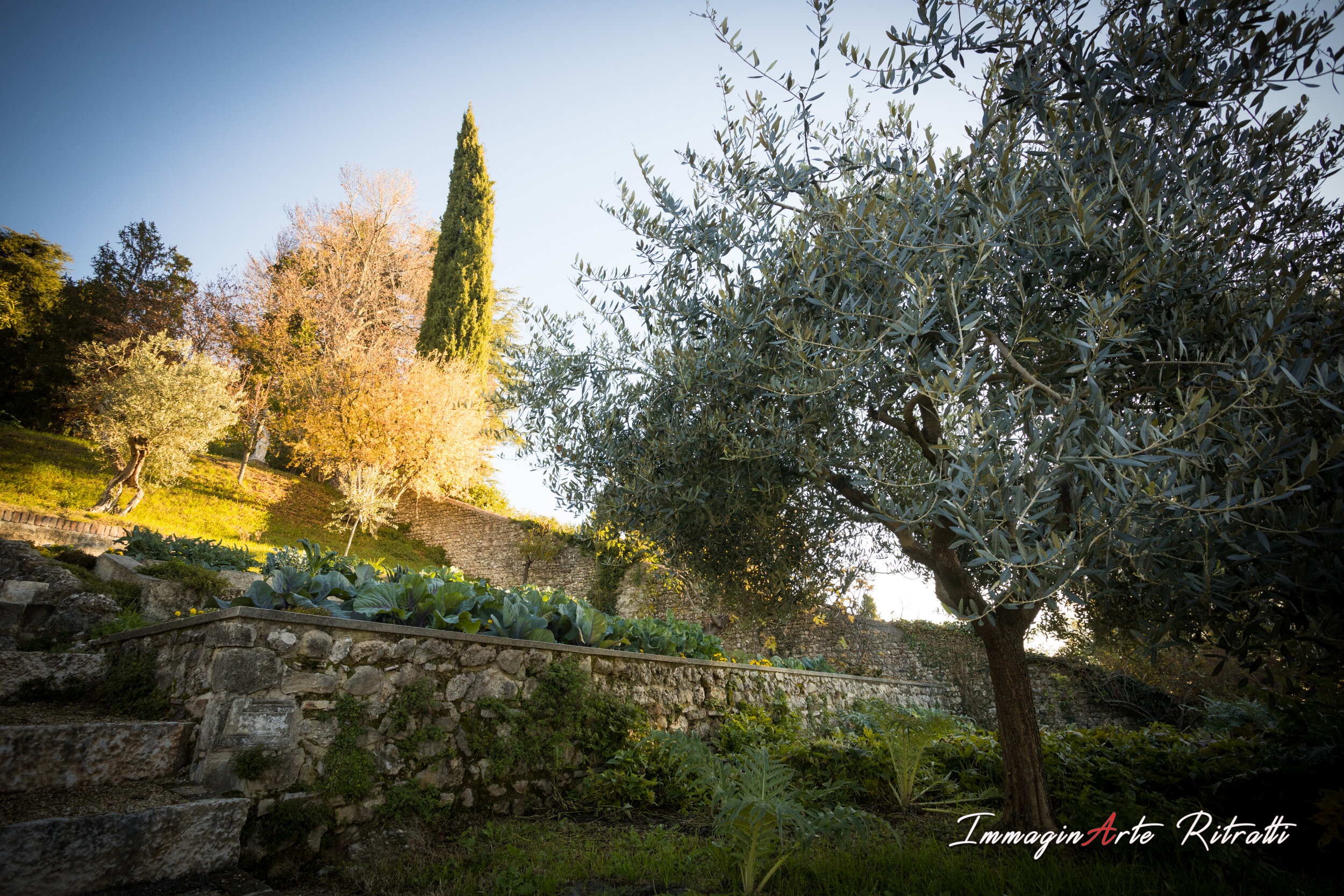



Description
Coming from the archaeological area above, it is possible to see the system of terraces that are cultivated with local vegetables according to season and crop rotation. You can also find brightly coloured flowering plants such as marigolds, zinnias, dahlias and others that create a contrast between this place and the neighbouring meadow with trees. Chromatic contrast and compositional taste are the aesthetic values of this place and they transform some plots of vegetables into a unique combination of colours and nature. The site is managed as a simple domestic vegetable garden with continuous cultivation: manual tilling of the soil, organic fertilisation, mulching with straw, jute and foliage. The vegetable garden is also clearly visible from the road below, that allow you also to see the terracing walls decorated with hanging
